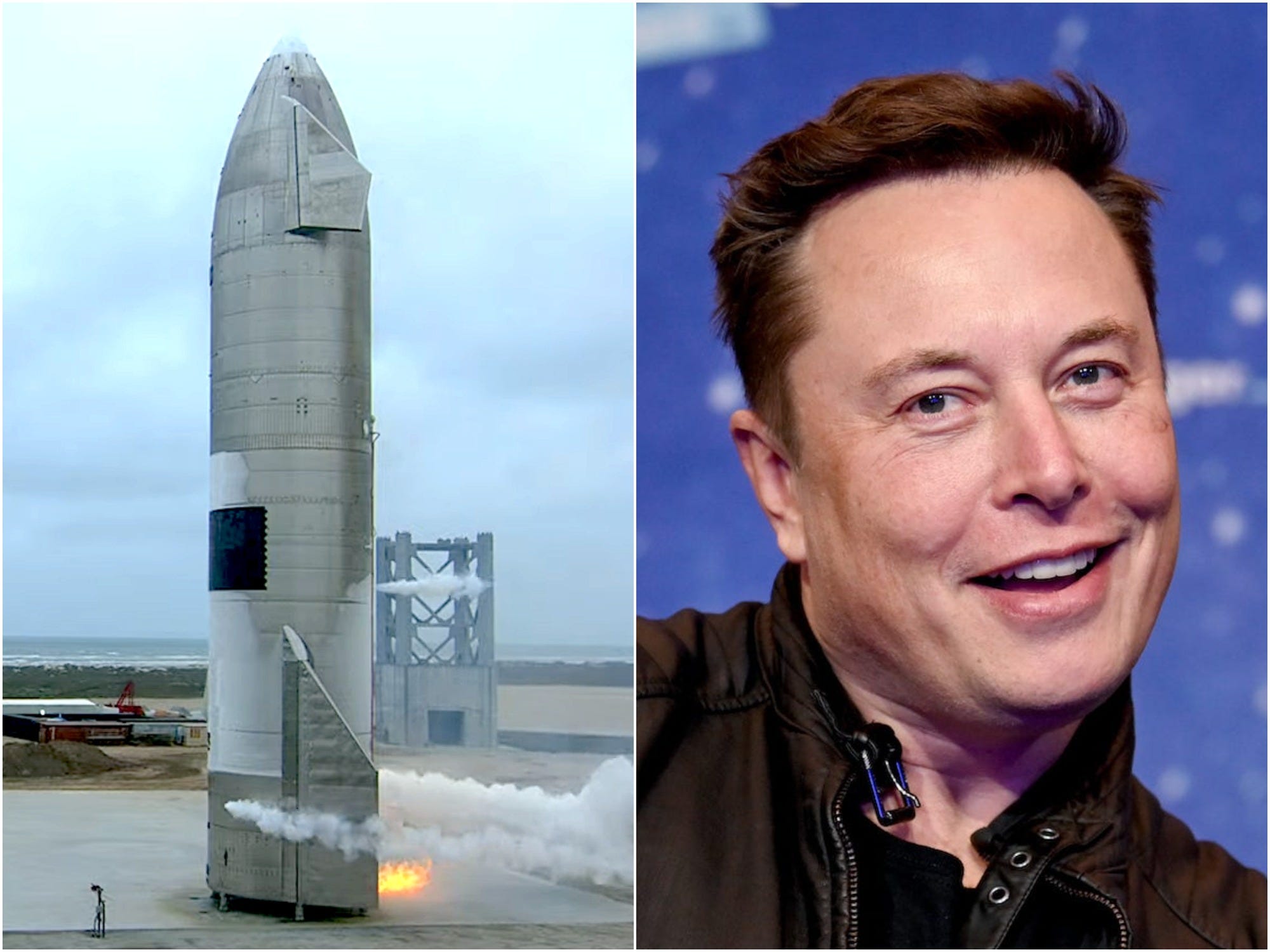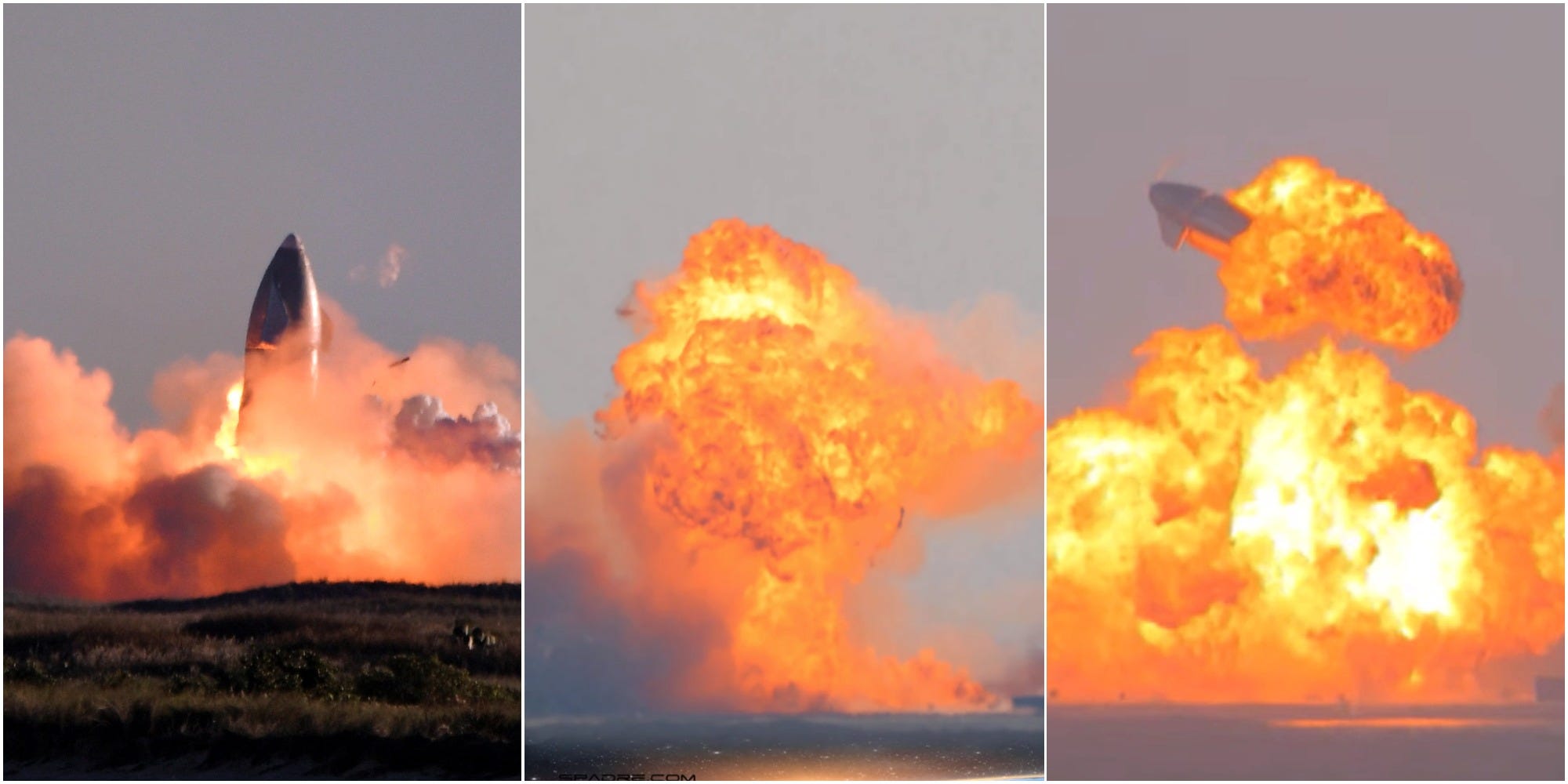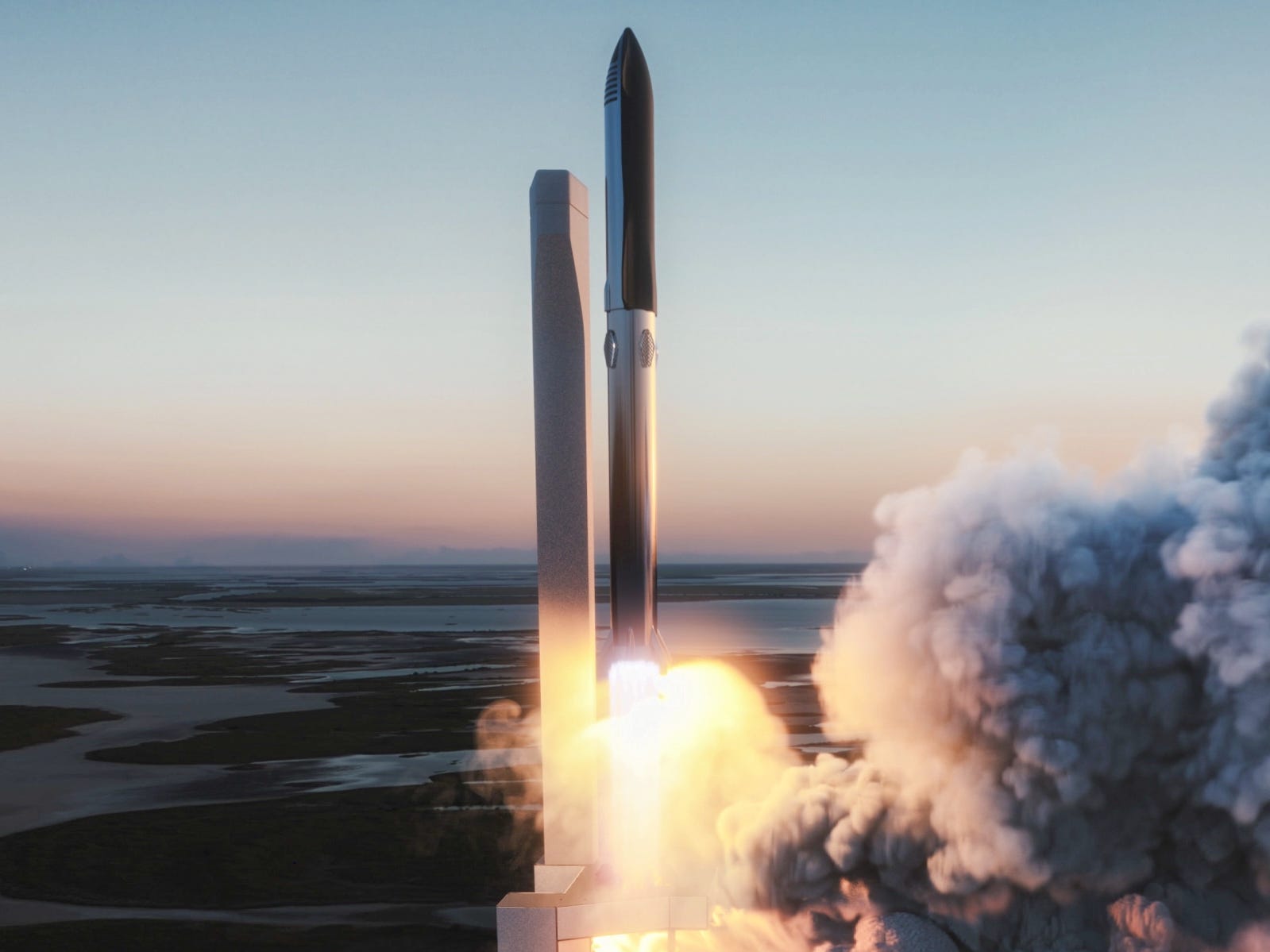
SpaceX; Britta Pedersen-Pool/Getty Images
- SpaceX has launched and landed a new prototype of its Starship spaceship.
- SpaceX has now flown five Starship prototypes to high altitude, but the first four exploded.
- This successful test flight gets Elon Musk closer to the fully reusable rocket he wants.
- See more stories on Insider's business page.
On Wednesday, SpaceX sent the latest prototype of its mega-rocket system roaring six miles above Texas, its fifth such launch since December.
SpaceX is no stranger to Starship launches, but unlike the last four attempts, this prototype landed smoothly, without blowing up during its first 15 minutes back on Earth. A previous prototype exploded 10 minutes after landing, after a fire burning around its skirt wouldn't go out. But this time, the fire at the prototype's feet appeared to be extinguished.
"Starship landing nominal!" Elon Musk, SpaceX's founder, CEO, and chief engineer, declared on Twitter.
This version of the spaceship, called Starship serial No. 15, or SN15, followed the same trajectory as its predecessors. The 16-story rocket lifted off from SpaceX's launch facilities in Boca Chica, Texas. As it approached the peak of its flight, the vehicle shut off two of its three truck-sized Raptor engines. It hovered at roughly 33,000 feet before cutting the final engine, then tipped sideways and plunged back to Earth. As it neared the ground, the engines reignited to flip the rocket upright, and then it lowered itself to the landing pad.
As of Wednesday afternoon, SN15 was still sitting upright and intact on the landing pad.
A final version of this mega-spaceship is set to become NASA's next moon lander - the vehicle that could put boots on the lunar surface for the first time since 1972.
Musk has an ambitious vision for the launch system. The prototypes his company is launching are meant to be the upper stage of a two-part system. Eventually, a roughly 23-story booster called Super Heavy would heave the spaceship toward orbit. Musk wants this system to carry humans into low-Earth orbit, to the moon, and even to Mars, then return to Earth to do it again. The smooth landing of SN15 gets Starship a big step closer to being the reusable vehicle Musk wants.
"It's a tough vehicle because we're trying to crack this nut of a fully and rapidly reusable rocket," Musk said in a NASA press conference on April 23. "Somebody's got to do this. And if you have rapid and complete reusability, then that is the gateway to the heavens."
SpaceX is building a booster that could carry Starship to orbit
The SN15 was the second of the five high-flying Starships SpaceX has launched that touched down in one piece - at least initially. The other was SN10, which landed in one piece in early March but blew up 10 minutes later. The first two Starship prototypes that soared to a high altitudes, SN8 and SN9, both slammed into the landing pad at high speeds and exploded immediately. Another, SN11, exploded in midair as it relit its engines for landing.

Gene Blevins/Reuters; SPadre.com
SpaceX began assembling its first prototype of the Super Heavy booster - the other part of the Starship system - at its Texas facilities in mid-March. Musk said this version of Super Heavy is just for production testing, though the next prototype should fly.
To grasp the size of this launch system, look for the person standing on the lift in this photo Musk shared on Twitter. Starship, not pictured, would sit on top of that booster.
-Elon Musk (@elonmusk) March 18, 2021
In addition to landing astronauts on the moon, Musk wants the Starship-Super Heavy system to power hypersonic travel on Earth. Ultimately, he has said, he plans to build 1,000 Starships that would carry people and cargo to Mars in order to establish a self-sustaining settlement.
Making Starship-Super Heavy reusable could slash the cost of reaching space by "a factor of 100 or more," according to Musk. Its enormous size would allow it to carry large payloads to space, including tens of thousands of Starlink internet satellites that SpaceX plans to put into orbit.
In short, this is the launch system on which SpaceX is staking its future. But there are several hurdles to clear before it can reach space.
Environmental reviews could slow Starship's journey to orbit

SpaceX
Japanese billionaire Yusaku Maezawa has already booked tickets for himself and eight others for a week-long Starship flight around the moon in 2023. The group is set to become the spaceship's first passengers. After that, NASA hopes that Starship will return astronauts to the moon in 2024. But a report from the agency's Office of the Inspector General suggested it's "highly unlikely" NASA will meet that deadline.
In addition to successfully landing Starship prototypes, SpaceX will need to integrate the Super Heavy booster with the spaceship, learn to launch the two parts together, and show it can land the booster in one piece.
The company will also need to rocket a Starship into orbit to test its ability to reenter Earth's atmosphere. That will require a new type of launch license from the Federal Aviation Administration, which involves many regulatory hurdles, including a thorough environmental assessment. Depending on the findings of that assessment, it's possible SpaceX may need to conduct a new environmental impact statement, which could take up to three years.
Complicating matters is a leaked FAA draft document obtained by Insider that revealed SpaceX's plans to dig natural gas wells and build gas-fired power plants in Boca Chica. Such plans could prolong SpaceX's environmental review process.
Still, Musk maintains that Starship could fly its first people in "a couple years." He has also said he is "highly confident" that SpaceX will launch an uncrewed Starship to Mars in 2024, followed by a crewed mission in 2026.
"I tend to be somewhat optimistic with respect to schedules. I feel I should acknowledge this," he said in the NASA briefing. "So take that with a grain of salt. But I think it's not out of the question that it could fly people in a couple years."
